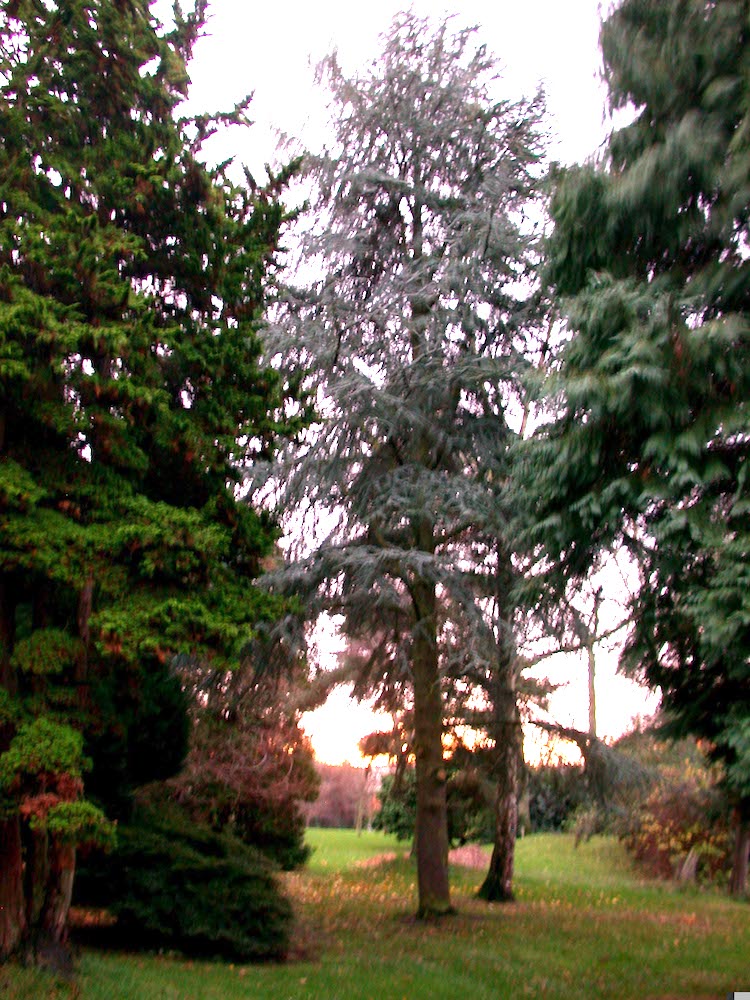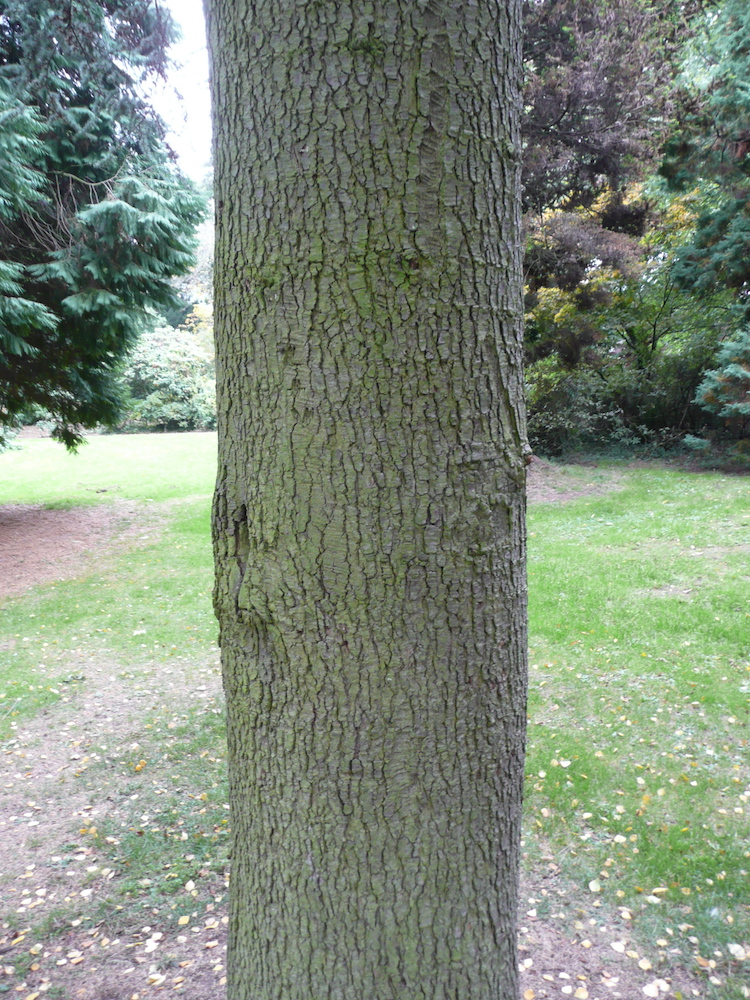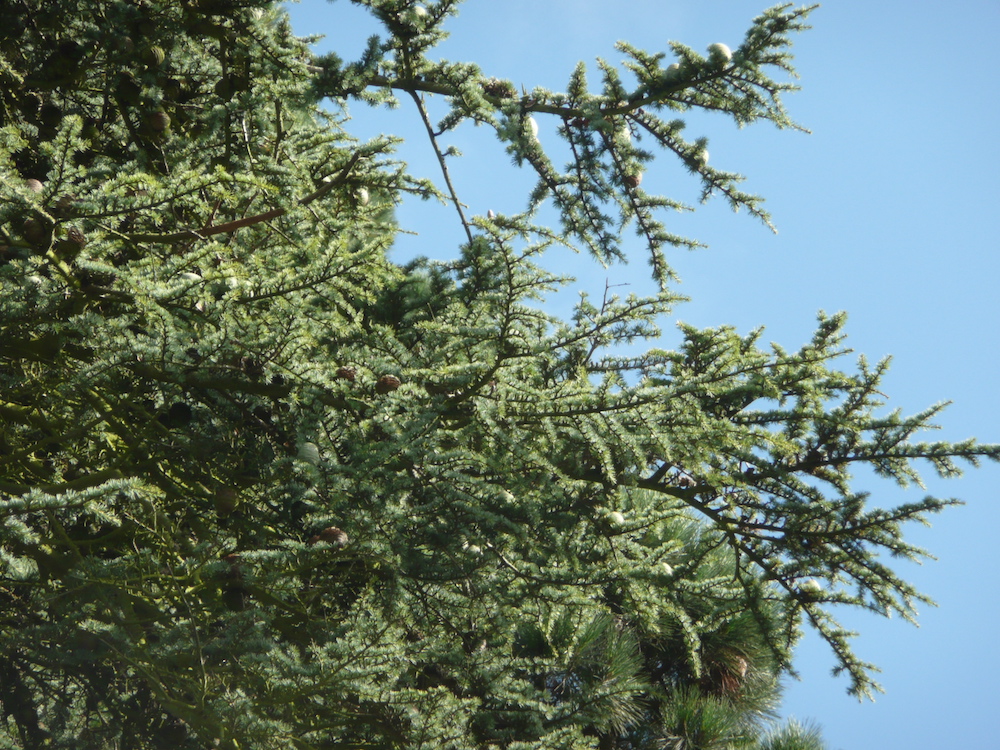Cedrus atlantica (Endl.) Manetti ex Carriere
Glauca group Blue Atlantic cedar
The tree tag number relates to the black tree-maintenance tags, usually fixed on the trunk, 2 to 3m above ground level.
The blue cedar is a form of the Atlas cedar ( C. atlantica) from the Atlas mountain in Algeria and Morocco. It was introduced in about 1840. The blue form is one of the most spectacular blue conifers and was awarded the RHS First Class Certificate in 1972 and the Award of Garden Merit in 1984. There are 3 species of the genus Cedrus, one of which is the deodar (Cedrus deodara) of which there are several in the Botanic Gardens. The other two are C. atlantica and C. libani (cedar of Lebanon). C. brevifolia (Cyprian cedar) is now included in the species C. libani. The cedars have a distinctive leaf arrangement. On one-year old stems, the leaves are arranged in a spiral on the stem, but in older twigs and branches all the leaves are in bunches on short stubby shoots. This arrangement is also seen in Ginkgo and the Larches ( Larix sp). The cones of cedars break up and shed their seeds while still attached to the branches so are seldom seen on the ground unlike the cones of pine trees.




Photos taken in Belfast Botanic Gardens in 2009 and 2010. Copyright: Friends of Belfast Botanic Gardens.
